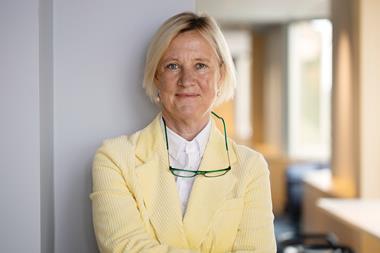For the first time since the introduction of the Dutch pension law in 1954, pensioners are to be told that their pensions will be cut by 3-4% from April 2013. Also, companies might be forced to pay extra contributions. The stated reason for this is the low coverage ratios of pension funds. But that this is not correct. By calculating a wrong coverage ratio, employees and pensioners are unduly and unnecessarily hurt, and economic growth is frustrated.
So why are these changes being implemented? The Dutch pension regulator (DNB) uses a coverage ratio that is too low, and which during the financial crisis encouraged pension funds to sell equities - with their long-term high yields - too cheaply, and to buy low-yielding, expensive sovereign bonds. More important, current coverage ratios are far lower than is economically justified.
When coverage ratios are too low the regulator can impose measures such as reducing pension payments, ordering extra contributions or changing funds’ asset mix.
The coverage ratio is the asset value divided by the pension liabilities - a higher ratio indicates a more comfortable financial situation. A crucial element in determining the ratio is the discount factor against which future pension liabilities are discounted. The lower this factor, the higher the present value and the lower the ratio.
In the past, this discount rate was fixed at 4%. Nowadays pension liabilities are discounted by the actual rate of interest. Interest rate levels are extremely low - presently 2.7% - and very volatile, due to the financial disorder. This implies a high present value of liabilities and, therefore, low coverage ratios. Moreover, the interest rate, and therefore the coverage ratio, is rather volatile. Coverage ratios have become unreliable daily thermometers.
A low coverage ratio - according to the DNB - can be countered by investing in less risky assets, for example bonds, but they are yielding less. Therefore, a disastrous mechanism has been put in place where funds sell equities, which pushes down equity prices, which in turn generates problems for other pension funds, and so on. The same mechanism holds for the other side: buying so-called riskless bonds lowers interest rates creating higher liabilities and the need for more bonds.
Previous interference has also added to the problem of the low coverage ratios. When equities were at their highest during the 1990s, companies wrongly siphoned off vast amounts of money from the pension funds, or they lowered their contributions: the necessary buffers were erased abruptly.
More recently, during the financial crisis, the regulator forced pension funds to sell equities and other risky assets at fire-sale prices - and one can say ‘forced’ because the pressure exerted by the DNB felt to smaller pension funds like being forced.
Menno Snel, IMF director, experienced this while working at APG. He accused the regulator of putting pressure on pension funds in 2009 to swap equities for low yielding government bonds. “This was devastating for the future returns of funds that had invested billions of euros for millions of Dutch people,” Snel said.
Politicians also acted irresponsibly. Selling equities at their lowest is financial suicide. Investors should follow the simple rule: buy low, sell high. But pension funds were asked to do exactly the opposite. In one stroke billions of future returns were wasted, pension money was lost, never to be regained.
The fallout of this three-phase race to hell - siphoning off pension money during an equity bubble, selling equities at low prices and using an incorrect and too low discount rate - is painfully clear: most pension funds have a coverage ratio far lower than the required 105%.
Where does that low and volatile discount rate come from? The DNB prescribed it, hoping to secure pensions. Therefore the term ‘risk-free rate’ was coined, but that is only wishing and hoping. Pensions are volatile, and depend on the value of assets or level of contributions.
Which discount rate should be used? Economic theory is very clear: pension liabilities are to be discounted by the expected investment return*.
Pension funds need to determine how much risk members are willing to take. To get an idea, members should be presented with the expected returns attached to each risk level. Having gauged this preference, the asset mix and expected returns are fixed, the discount factor is known, and a robust and reliable coverage ratio can be calculated.
What kind of discount factor can be expected? In a free market economy, the level of long-term interest rates equals long-term labour productivity growth, which is long-term economic growth without expanding population, say 2-3%. Employing capital requires a risk premium, historically 3-5%, illiquidity can add a premium. In total, long-term equity yields can be around 5-8%.
As an indication, the yearly real return on equities from 1802 has been 6.8%. Bonds returned only half of that at 3.5% per year. This means that a euro invested in equities in 1802 would be worth almost €1m today, while a bond investment would be worth not more than €1,420. This euro invested in gold would be worth €3.
By their long-term nature, pension funds are the ideal party to provide that risk capital (except those mature pension funds which no longer have the luxury of long-term risky assets). Both the economy and pensioners benefit.
Using a correct discount factor has significant consequences. An average pension fund at today’s discount factor of 2.7% has a coverage ratio of 90%. Departing from a reasonable asset mix, a discount factor higher than 4% is acceptable, but even this low rate produces a coverage ratio of 119%, far above the required 105%.
Of course, returns will fluctuate and long periods of low returns occur; but an average pension fund can absorb this quite well.
It is high time we stopped killing our pension system. There should be no more ‘forced’ selling of equities at their lowest point, and the present discount rate, which is theoretically wrong and hurting the pensions industry, should be adjusted. And finally, the process by which pension funds strive for a risk-free rate of return but end up with a return free of risk needs to be stopped.
*See also Duffhues and van Nunen, ‘Fit for purpose, Finance Director Europe’, Issue 3, 2009ww


















No comments yet